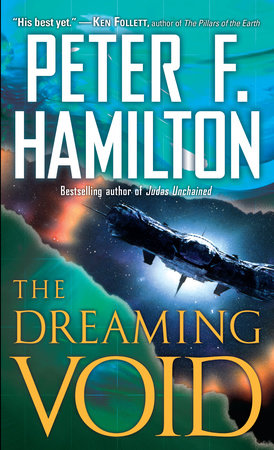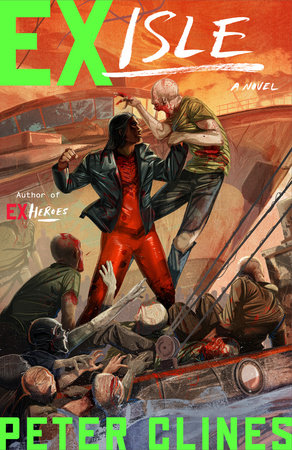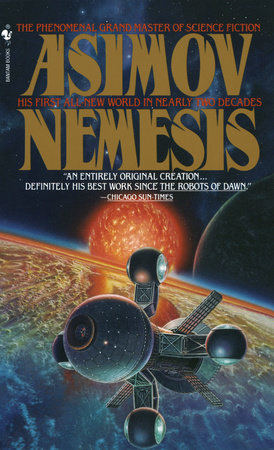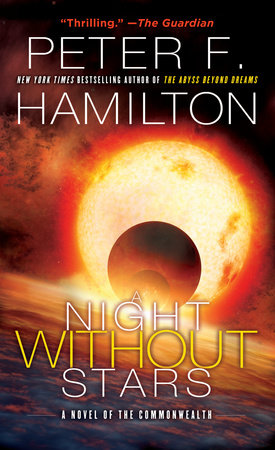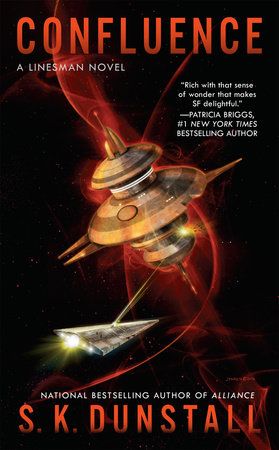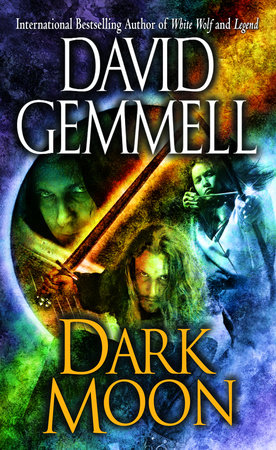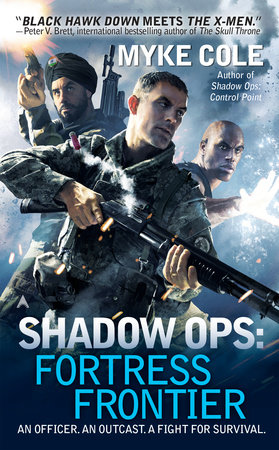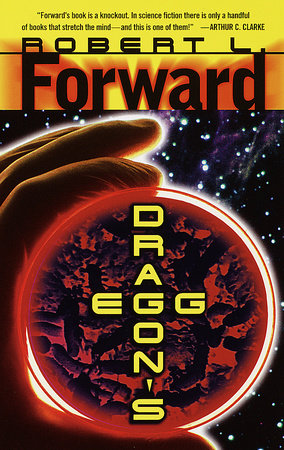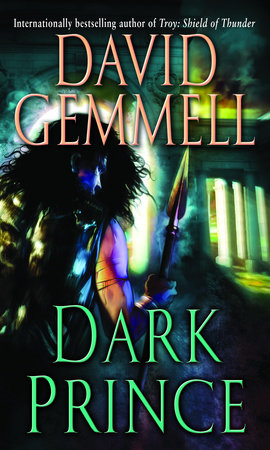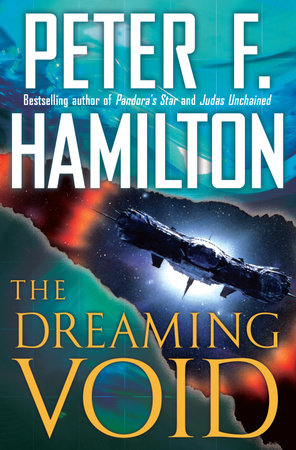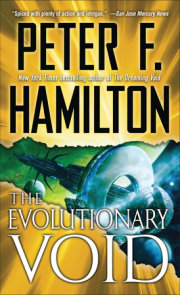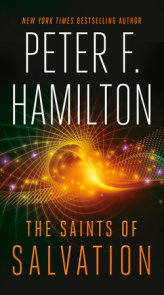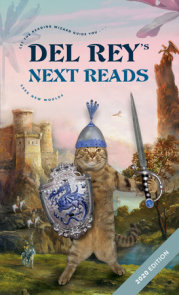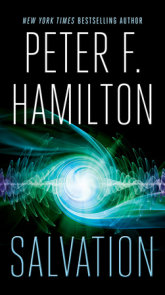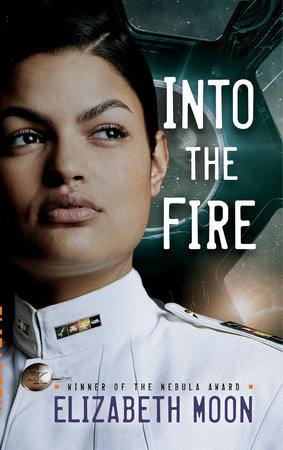Author Q&A
Conversation with Peter Hamilton
Question:Over the past few years, there has a been a resurgence in space opera, led by writers like you, Iain M. Banks, Stephen Baxter, Greg Egan, and others. Just last month, for example, an eagerly anticipated anthology, The New Space Opera, edited by Gardner Dozois and Jonathan Strahan, was released here in the States–containing, fittingly, a story by you. What distinguishes the “new” space opera from the old?
Peter Hamilton:If you classify “old” space opera as pre-1960s, then there was quite a large gap before people started writing it again. So the sheer development of technology in that time allowed for a degree of not so much realism to creep in but more theoretically acceptable concepts of a far-future civilization. By the nineties we could start to project developments in computing and wormhole theory and cultural trends with a lot more confidence. The futures we wound up writing about aren’t predictions, but because they are more firmly rooted in today, they make that kind of tomorrow more acceptable again.
Q:Why has space opera found fresh favor with critics and readers?
PH:I think because people realize that you can have fun with it and at the same time blend in more serious issues. The ability to explore ideas is limitless. That makes for an exciting genre.
Q:Do you see any significant differences between the way American and British writers approach space operas?
PH:Not really. If you do a blind reading the way they do blind tasting for wines, when you’re don’t know the nationality of an author, I bet most people wouldn’t be able to tell. Having said that, people who live here in the midlands around me would probably have a good guess purely because of the number of local names I sneak in.
Q:Your new novel, The Dreaming Void, is set 1,000 years after the events of its predecessor in the Commonwealth universe, Judas Unchained, so I suppose it can’t really be considered a sequel . . . even if it does feature some of the same characters. Can you set the stage for us?
PH:Sequel is wrong. It’s an examination of what happens next. Again a big development of technologies and political ideals have allowed for a very different culture to evolve from the victorious Commonwealth that existed at the end of Judas Unchained. Death has effectively been abolished, and the big question for humans is what kind of route to immortality to take. Then an alien version of evolution is discovered at the heart of the galaxy; the massive black hole lurking there is actually another universe. So naturally, some people believe it is their absolute right to go on pilgrimage there, no matter the damage that it will cause to the rest of the galaxy. In order to keep functioning, the Void consumes stars and converts their mass to energy. So this influx of pilgrims will necessitate a huge expansion phase, eating up a large portion of stars.
The question then is; do they have the right to pursue this goal at the expense of others?
Q:Is this book the first in a trilogy, or a duology like its predecessors?
PH:Definitely a trilogy.
Q:Why the 1,000-year gap?
PH:To allow time for various technologies and cultures to mature. The Commonwealth in this time has pretty much reached a plateau in just about every area, technological and social. The only thing left for it now is transcendence to a post-physical level. Though not every one wants that to happen.
Q:Back to the Void, a kind of self-contained micro-galaxy at the heart of our galaxy that is slowly devouring our galaxy in order to fuel its own existence and expansion. Is there hard science behind this idea?
PH:It’s more like a hijacking of hard science. We know there is a massive black hole at the center of the galaxy. And it was recently postulated that it may be possible for “information” to escape from an event horizon. I simply shifted the notion around to form the Void.
Q:The story in the anthology I mentioned above, “Blessed by an Angel,” introduces the character of Inigo, who plays a central role in The Dreaming Void. Tell us a bit about Inigo. Should readers find that story before they begin the novel?
PH:It’s not essential at all; however, it is interesting for anyone following the Commonwealth closely. The short story tells you a little about the big cultural shifts that were going on at that time in the Commonwealth universe. As to Inigo himself, he was the recipient of advanced nanotechnology that gives him an extremely sophisticated body and abilities. Unfortunately for him, he’s brought up on a planet that rejects this type of cultural evolution. The guardians of the planet’s culture are self-appointed, yet covertly assisted by the authorities, and they’re trying to stop the opposing culture from “contaminating” their world.
In the trilogy, you find out what kind of effect growing up a stranger within his own family and world has on him, and why he always feels isolated.
Q:What makes Inigo, out of all human beings and aliens, able to “tune in” to events within the Void?
PH:That will be referred to more in the second and third volumes of the trilogy.
Q:Your portrayal of religions in this novel, both the Living Dream, which exists outside the Void but is obsessed with what lies inside it, and the religion of the humans within the Void, is largely a negative one. Do you see religions in general as dangerous and inevitably at odds with science?
PH:It’s questionable if Living Dream is a religion. There are arguments either way. I see it as more of a cult, but we’re talking semantics now. It’s an organization with a vast number of devout followers who believe in a new kind of life it can make available. Define that as you wish. The one in the Void is a very low-level religion that doesn’t dominate its culture. I don’t see it as negative; its teachings are relevant to the Void and what happens to human souls within that universe. So in that context it’s a force for good. As to religions in general, some can be very detrimental to science. Fortunately, science seems to be holding its own these days, though sadly not in every part of the world.
Q:Ozzie, who played such a central role in Pandora’s Star and Judas Unchained, is offstage in this novel, perhaps dead, perhaps not . . . but his presence is still felt, especially through the gaiafield, which has made the religion of the Living Dream possible. I do get the feeling that you’re far from finished with Ozzie. . . .
PH:Ozzie certainly isn’t dead. We do get to catch up with him in volume three. Whether he wants people to catch up with him is another matter.
Q:There are two narrative lines in the novel: the first outside the Void, driven by the search for Inigo as the Living Dream’s plans to enter the Void accelerate, the second within the Void, focusing on a boy named Edeard, who possesses unusual psychic abilities. Are the events of the second narrative, within the Void, the dreams that Inigo has shared by means of the gaiafield? Are they the dreams of the mysterious second dreamer? Or are they something else entirely?
PH:Inigo dreams Edeard’s life, and those dreams are the foundation of the whole Living Dream movement. The second dreamer is starting to connect with a Skylord inside the Void.
Q:Your books are densely plotted, with many vibrant characters, and filled with intricate backstories. How deeply do you plot everything out before you sit down to write, and how much room do you allow yourself (and your characters) to improvise?
PH:Plotting something like this can take me anything from six to nine months. As well as plot lines, I do the inevitable world building, and generally getting my universe in order. At the end of that process, I produce chapter outlines–Each of which tells me where the characters are at the start, and where they have to finish. How they cover that distance is down to me on the day.
Q:What can you tell us about the next book in the series?
PH:Volume two focuses more on Edeard’s life in the Void and his struggle to bring law and order to the city. It also shows the true nature of the Void, which the reader hasn’t seen yet. Volume three will then go back to concentrate on the Living Dream pilgrimage and the human politics surrounding it.
Q:Of all the technologies currently being researched and developed, which do you think will have the most radically transformative effect on humanity within the next hundred years or so?
PH:I’m fascinated by genetic therapy, which finally seems to be making some big strides toward active medical treatments.
